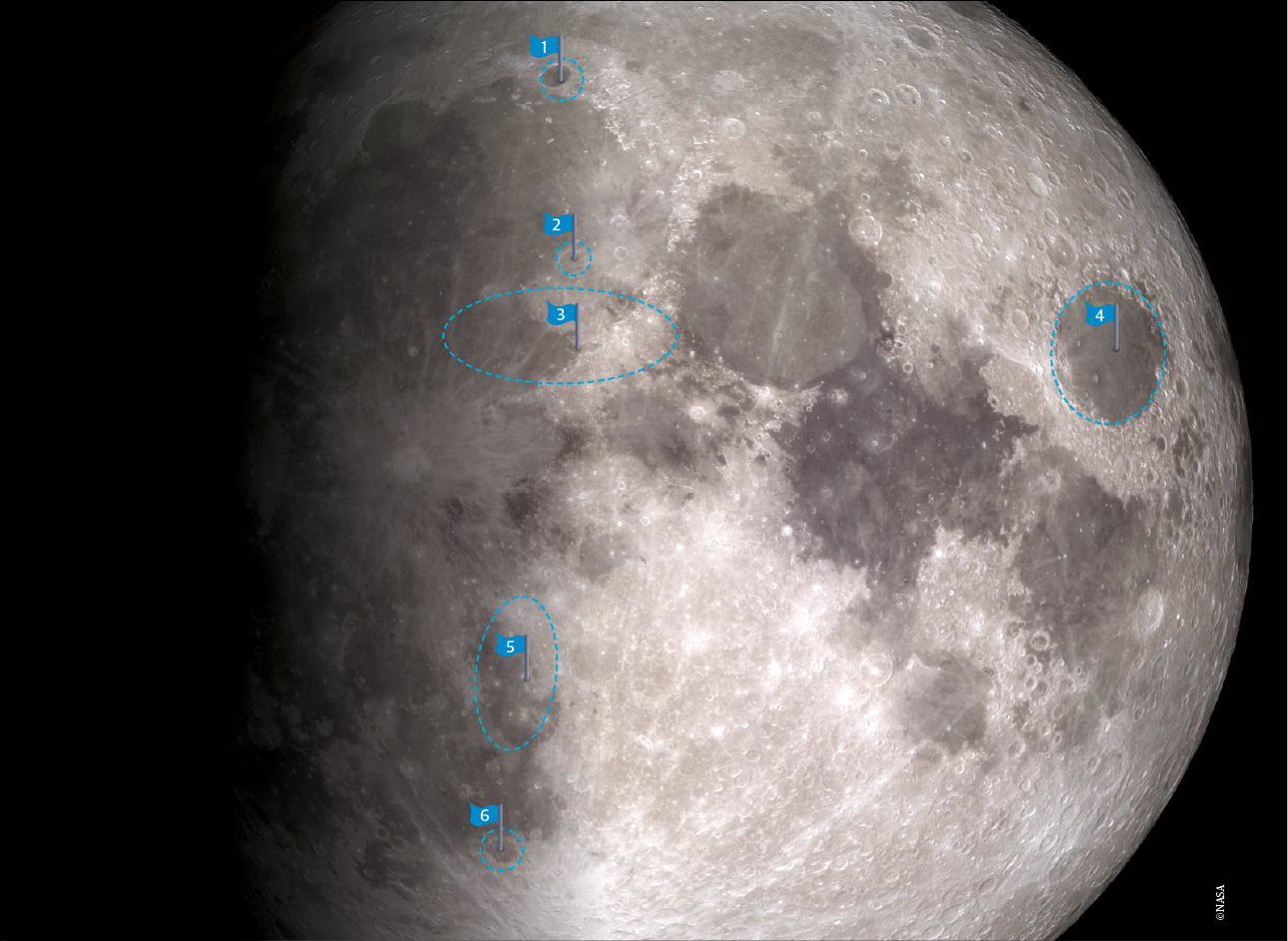Top sights to see on the Moon this month
Is there ever a good time to observe our lunar companion? It depends on what you want to see…
 Key
Key
1. Plato
2. Archimedes
3. Apennine Mountains
4. Mare Crisium
5. Ptolemaeus, Alphonsus, Arzachel
6. Tycho
The different phases of the Moon offer different visual treats and delights. The crescent phase, whether it’s a very young ‘new’ Moon hanging in the western sky after sunset, or an old waning Moon glowing above the eastern horizon before sunrise, is a beautiful sight. It can look particularly striking if it happens to be shining close to a bright planet. If the bright, sunlit crescent is quite thin you can often see the rest of the Earthfacing side of the Moon glowing with the subtle lavender light of Earthshine, too.
Despite what many observers will tell you, the full Moon is not the worst lunar phase to observe. True, with the Sun beating down mercilessly from high above there is no surface relief to see, no shadows are cast behind the Moon’s jagged mountains or into the bowls of its deep craters, but the full Moon is when it is easiest to see the contrast between the dark lunar seas and its rugged highlands, and to identify its major features too. Full Moon is also the best time to see the bright ‘rays‘ streaking across the Moon’s face – trails of dusty debris sprayed out across the Moon by the impacts which blasted the youngest craters out of the surface. Also, few sights in astronomy can compare with seeing a bloated full Moon rising up from behind the trees like an enormous silvery hot air balloon.
However, I have always thought that one special day of the lunar month offers the best of both worlds, and provides stunning views through binoculars and small telescopes. When the Moon is just slightly gibbous, a day past first quarter – what many people call a ‘half Moon‘ – it offers the observer fantastic views of every type of lunar feature. With the terminator – the line between lunar night and day – running almost straight down the middle of the Moon’s face the light is just perfect for seeing its craters, mountain ranges, sprawling seas and long debris rays, too.
Binocular views of the Moon the day after first quarter are fascinating, with the seas on the eastern side of the Moon’s face clearly visible as dark, bluegrey splodges, and the largest craters along the terminator looking like pock marks. Through a small telescope with a low-power eyepiece, with the Moon almost filling the eyepiece, you can easily imagine you’re a space tourist, flying towards the Moon in a spaceship.
Increase the magnification so you’re looking straight down into the craters along the terminator and you’ll feel like you’re standing behind the astronauts of the future as they descend towards the surface, looking for a safe landing site, just as Armstrong and Aldrin did in 1969 when they guided the Eagle lunar module towards its historic landing on the Sea of Tranquility.
When the Moon has just passed first quarter you will be able to see the sweeping curve of the jagged Appenine mountain range, right on the terminator towards the north. Just above those mountains the crater Archimedes will stand out from the surface in stark relief, looking as fresh as if it had been made the day before. To the east, next to the curving limb, the oval Mare Crisium will look like a dark thumbprint on the Moon, and between it and the terminator other dark seas will form the shape of a crab’s claw. In the centre, just to the right of the terminator, a chain of three craters, Ptolemaeus, Alphonsus and Arzachel will look very impressive. At the top of the disc, on the terminator, the dark-floored crater Plato will stand out clearly, while back towards the bottom of the terminator, the young crater Tycho will be starting to emerge from the shadows. As you stare down into it, Tycho might remind you of a bullet hole in a wall, or a pit left on the surface of a frozen lake after the impact of a heavy stone.
This month the Moon is at first quarter on the evening of 22 April, and if you observe it on that night you will still have fantastic views, but the following night those views will be just a little better. If you don’t believe us, take a look yourself!
Keep up to date with the latest reviews in All About Space – available every month for just £4.99. Alternatively you can subscribe here for a fraction of the price!




